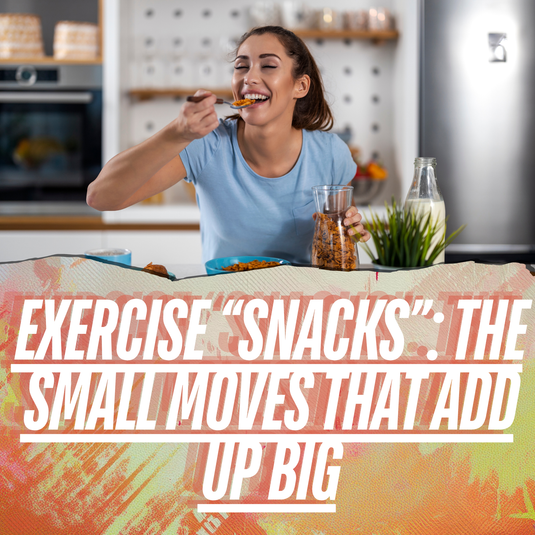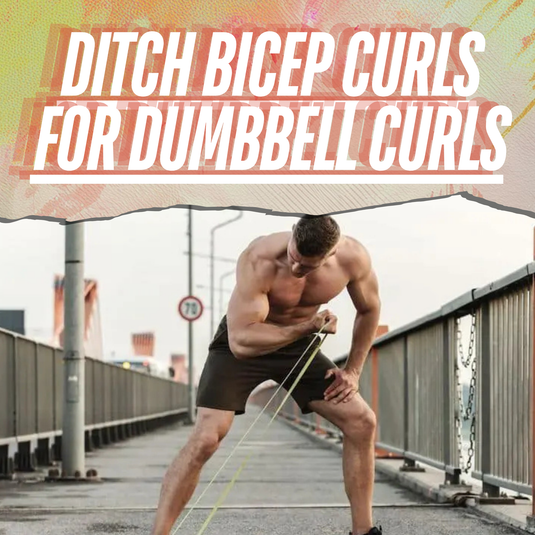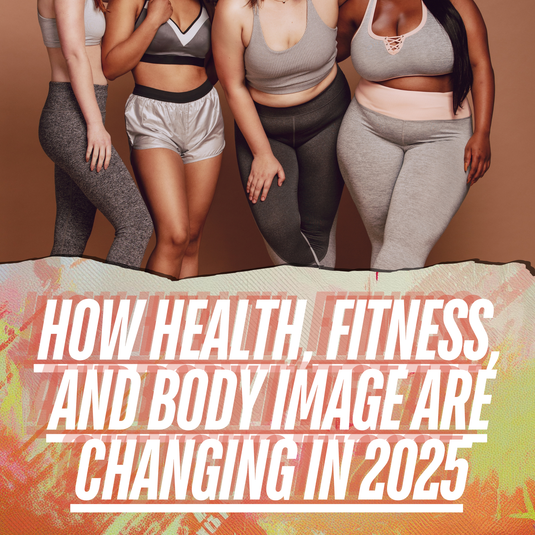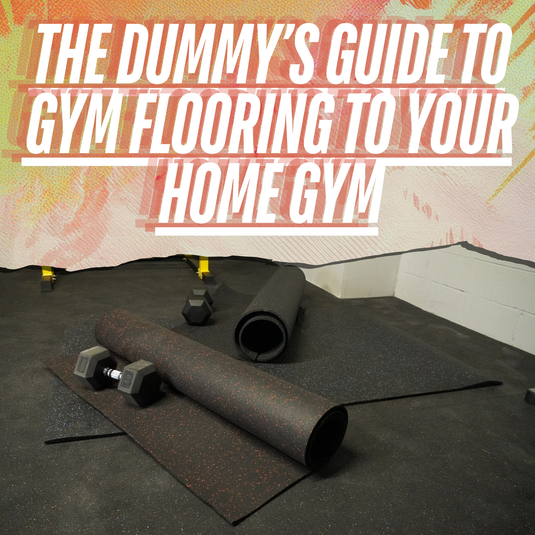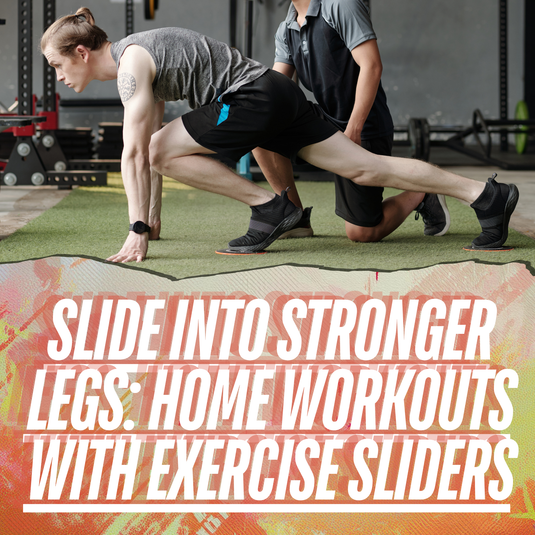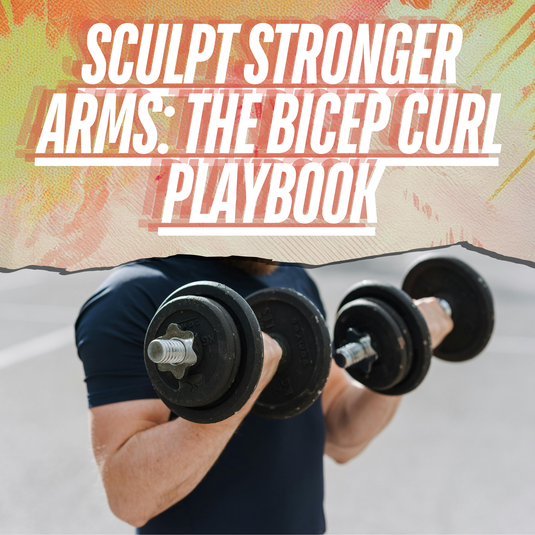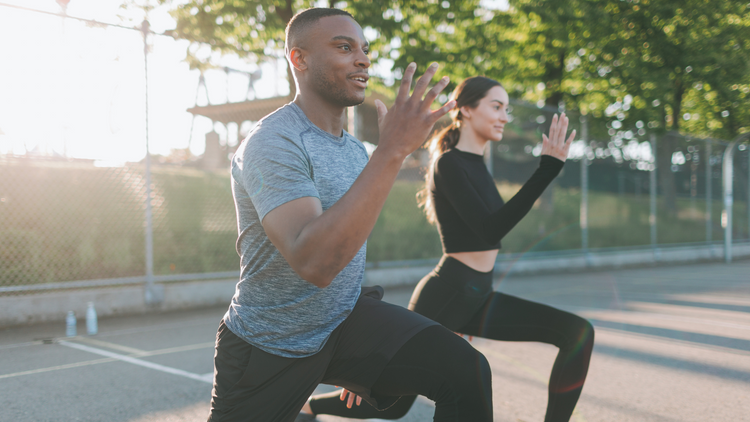Bodyweight Workouts for Muscle Building
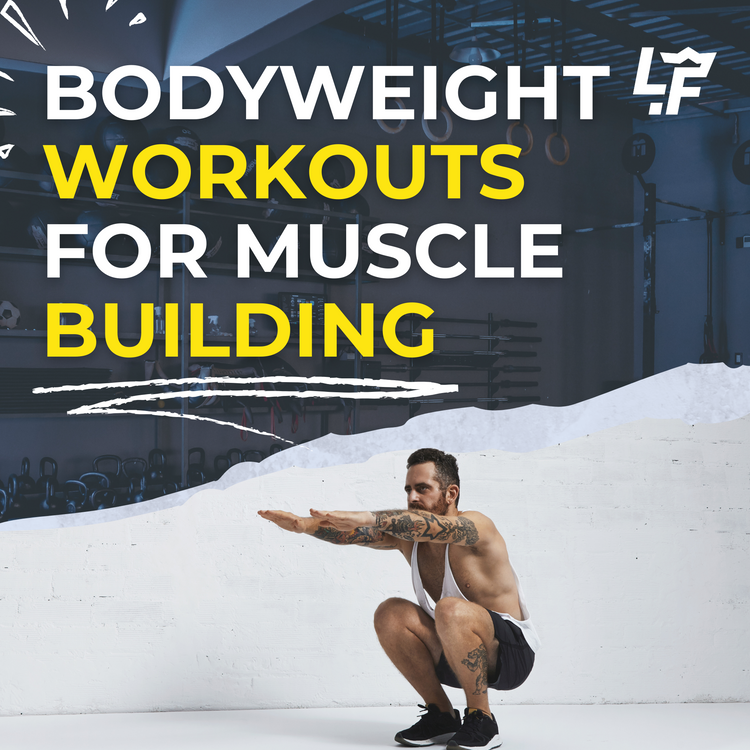
⏱️ Estimated Read Time: 6 minutes
🧠 TL;DR
- Bodyweight Workouts for Muscle Building offers effective, accessible movements for targeted results.
- This guide is designed to help you move smarter, build strength, and stay consistent.
✍️ Summary
This post explores bodyweight workouts for muscle building in a way that’s actionable and easy to follow. Whether you're new to this style of training or leveling up, it includes practical takeaways for your routine.
📚 Table of Contents
Who needs a list of 20, 30 or 50 different bodyweight exercises? Master these 7 bodyweight exercises (with audio cues) before anything else and you will be well on your way to build muscle with just bodyweight exercises. Why 7? Phone numbers have 7 digits for a reason. It is easier to recall and our goal is to give you something you can remember to set you on the path to building muscle where you want it (or you would not be reading this), not memory (we will save that for another day). What is one of the best things about these 7 movements? We have full audio and written coaching for you on each one.
Can I Build Muscle with Just Bodyweight Exercises?
Never trust anyone who tells you that you can reach any fitness goal prefaced with ‘just doing this. You need to follow an expertly written plan for your goal as well as fuel your body weight and proper nutrition. Having said that, bodyweight exercises do build muscle and if you do not currently have access to weights, you can focus on bodyweight exercises to build muscle. Bodyweight exercises are also great if sometimes you just want a break. Variety is the spice of life and taking some time off weights can sometimes be ideal both mentally and physically. We will cover some of the risks you face by not following an expertly created workout sequence as well as nutrition as we go along. While we are at it, here is one more statement you should be on the lookout for…
What is the Single Best Bodyweight Exercise?
Do not trust anyone who tells you they know the single best bodyweight exercise or the best bodyweight workout. An expert will tell you that it completely depends from person to person on factors like your current level of mobility, fitness, goals, and more. It can be helpful to have a certified professional evaluate all of the aforementioned factors as they pertain to you before diving into any particular movement, especially if you are just getting back into fitness. The single best bodyweight exercise might be unique for you compared to someone else. The best bodyweight workouts are those that help you reach your goals and do not expose you to risk.
Helpful Resources:
-
Free Daily workouts with bodyweight here
Build Muscle With These 7 Bodyweight Exercises
Just a few more caveats before we really begin. First, you should focus on learning proper techniques to realize the full benefits of any exercise. The same goes for bodyweight workouts. The purpose of this article is to help you start thinking about the benefits of bodyweight exercises and learn the beginnings of some basic movements. However, the way to truly benefit from bodyweight exercise is to follow a plan tailored to your specific goals. For example, if your goal is to build muscle, your workout sequence might be different compared to an endurance-focused goal. If you are not an expert, it is a good idea to follow a specific sequence of workouts as opposed to doing random exercises that are not related to each other day after day. You should also follow a good warm-up and cool-down sequence in your workout session to prime yourself for the workout as well as prep for the next one.
Want to Try Bodyweight Workouts That Burn Fat and Gain Muscle? Get Access to 7 Different Bodyweight Workouts + Create Your Own With a Workout Generator! Follow on desktop or mobile!
Lunge Matrix with Arm Drivers
About: This is a fantastic three and a half minute sequence that can double as a mini workout itself for complete beginners as well as a great warm-up sequence for more intense bodyweight workout sessions.
How To: Throughout this sequence, you will repeatedly take a step forward into a lunge position and put most of your weight into the foot that is stepping forward. Drive through the heel of your stepping foot when you drive yourself back to the standing position and keep your torso tall and tight.
Sequence
-
Low Position - You will step forward into a lunge and drive your arms out in front of you to touch the ground. Repeat on each side. Make sure you do not feel any discomfort in your lower back, if you do, do not go down as far.
-
Middle Position - Take a step forward into the lunge position again and this time you will extend your arms out directly in front of you. Drive back to the standing position through your heel and repeat on the other side.
-
Overhead Position - Lunge with one foot out in front and your hands at your side. At the bottom of the lunge position, you will raise your hands from your sides all the way extended over your head like the top of the press position. As you drive back to the standing position through your heel, you will lower your arms to your side and repeat on the opposite leg.
-
Rotation - This time as you lunge forward you will raise your arm almost level with your chest like they are resting on an invisible table in front of you (displayed at the 14 second mark) and at the bottom of each lunge rotate your torso to the same side as your forward foot, back to the center and slightly to the other side. Then drive yourself back up and repeat on the other side. Example: If you are stepping forward with your right leg, you will rotate to your right at the bottom before back to center and slightly to the left.
-
Reach Over the Top Laterally - As you reach the bottom of your lunge, with the arm opposite of your lunging leg you will reach it up over your head towards the same side as the lunging leg (demonstrated at 0:20). This should create a stretch feeling on your side. Then stretch your other arm overhead to the other side before driving back up. Note: You will do an overhead stretch on both sides on both legs.
You will then repeat this sequence again while stepping/lunging at about a 45 degree angle from your center as opposed to directly out in front of you. Demonstrated at the 27 second mark.
Next you will repeat this sequence lunging directly laterally while performing the same arm movements (shown at 55 second mark). After those 5 movements you will step back at a 45 degree angle. So, this is the same premise as the second sequence except stepping back at angle. Lastly, you will perform the same sequence while stepping directly back behind you into lunge positions.
Now that is a warm up!
Helpful Resources:
-
Free Daily workouts with bodyweight here
Flutter Kicks Exercises to Build Your Abs
You will lie on your back for this movement with your hands at your sides. If you feel any amount of tightness or discomfort during this movement you can lay your hands, palms down under your glutes. You should never do any movement that causes you pain. Extend your feet out from you and you will be kicking like you would underwater. Alternate your kicks and try not to actually touch the ground with either leg until the end of the sequence. You will engage your lower abs by keeping them tight and flexed to resist the pressure the downward weight of your leg causes on the way down. As you lower each leg, you should feel it pull on your abs and keeping that flex and tension in your abs is what prevents the leg from actually lowering to the ground while building your ab muscles.
Use Hinge Hops to Perfect Your Hinge as the Building Block of Many Other Movements
You will start in standing position with your hands at your sides and your feet shoulder width apart. The goal is to forcefully drive out of the hinge position so much that it actually brings you up off the ground. To start, you will push your hips back into a hinge position. If you think about how the hinge on a door works to open and close, your hips are acting as that hinge. As you push them back it will lower your torso towards the ground in front of you. When you get close to being at a 90 degree angle, you will forcefully drive your hinge forward so that as you return to the standing position you come up off the ground. Focus on a smooth deceleration as you land, control your body, do not just let the force of your landing through you back into the hinge position. Repeat this sequence.
Reverse Scapula Raises - The Pull Up Substitution
Your starting position for this bodyweight exercise is with your back and feet at the floor. This means your knees are bent.
Your elbows should be on the ground at a 45 degree angle from your torso and lie on the ground as well with your forearms up in the air and your fists clenched (pictured at beginning of movement). Your shoulders should be down and back pressed against the floor which means part of your upper back is most likely slightly raised off the ground. Engage your scapula/shoulder blades by squeezing your shoulders down towards your hips. This will puff out your chest. You will drive your elbow as hard as you can into the ground, your torso should raise up off the ground if you have enough strength. This should hyper engage your abs to build a six pack. This will also engaged your rear delts and lats which are the same muscles used in a pull up.
Lateral Lunge - Build Powerful Legs/Glutes by Loading Through Your Heels.
You will start this movement in a standing position with your feet about shoulder width apart. Start this movement with either leg by stepping directly laterally to your side. As you plant your foot you should be lunging toward the newly planted foot. Whichever foot you step with, you should put about 80% of your weight into that step and focus on keeping the weight in your heel. This will keep your load in the back to engage your glutes more than your quads. Keep your chest proud and your core tight. You should keep your spine in alignment so you do not feel any lower back pressure. Drop into the stepping foot as low as you can in your functional range of motion. The key is to step a bit further away and drop the hips as much as possible to make this more and more challenging each time.
Want to Try Bodyweight Workouts That Burn Fat and Gain Muscle? Get Access to 7 Different Bodyweight Workouts + Create Your Own With a Workout Generator! Follow on desktop or mobile!
Squat Jump
You will perform a bodyweight squat but the goal is to forcefully come up with as much speed as possible to drive yourself off the ground. The key with the squat jump is in the landing. Your hands should be down when your hips are down in the low squat position. Your hands will come forward and up forcefully as you stand up to about chest level. As you land you will land into a contracting position, reducing the amount of force that your feet and body feel. Simultaneously throw your arms down which will actually engage your abs and contribute to safety during this movement.
Reverse Plank - Build Core & Back Strength
With the reverse plank you are going to try and position your hands under your shoulders behind your back. You should be able to draw a straight line from your ankle to your ears. This will create massive amounts of vertical core engagement with your abs, upper back and shoulder mobility. If you do not have shoulder mobility you can slightly drop your hips to towards the ground, bend your knees, bend your elbows or put your arms a bit further out from your shoulders. The goal is to eventually be able to perform this movement as described above without having to make it a bit easier. This will create maximum effectiveness in build your abs and back.
Push Up - Movement Breakdown - The Full Body Movement to Build Strength
The classic! Make sure you have good vertical integrity. This means you should be able to draw a straight line from your ankle, through your knee, hip, shoulder and ear. This will keep your core nice and strong as well as nice and tight. Keep your shoulders down and back.
Your elbows will come down at a 45 degree angle and hover over your hands. Then you will press yourself all the way up to a locked out plank and then all the way down to your functional range of motion.
Putting it All Together
Adding these seven movements into a sequence will create a great full body workout. The movements above cover your entire body from your legs to your core to your chest and shoulders.
A sample sequence for this if you wanted to perform a high intensity workout would be to perform each movement for 30 seconds. Then rest for 10 seconds. After you get to the push ups, rest for 60 seconds after that before repeating the sequence. Do this 6 times total to perform a full bodyweight high intensity interval training workout. Depending on your goal, you would adjust the amount of work and rest between movements. Thought not covered in this article, here are a few other example sequences:
Workout:
-
Running In Place - 30 seconds of work
-
10 second transition
-
-
Side Bend Elbow to Knee (Alternating) - 30 seconds of work
-
10 second transition
-
-
Crabwalk - 30 seconds of work
-
10 second transition
-
-
Crawl - 30 seconds of work
-
10 second transition
-
-
Sit-Throughs (Alternating) - 30 seconds of work
Rest for 60 seconds and Repeat for 6 Rounds
Workout:
-
Squat Jump - 30 seconds of work
-
10 second transition
-
-
Side Hand Plank Left - 30 seconds of work
-
10 second transition
-
-
Side Hand Plank Right - 30 seconds of work
-
10 second transition
-
-
Single Leg RDL Alternating- 1 minute of work
-
10 second transition
-
-
Straight Arm Rotators - 30 seconds of work
-
10 second transition
-
-
Backbend - 30 seconds of work
Rest for 60 seconds and Repeat for 4 Rounds
All of the movements above are taught in The Full Bodyweight HIIT Program by Living.Fit. The Daily Bodyweight HIIT Program has been created for all of the people looking to be stimulated and engaged mentally and physically, while also using the Living.Fit principles of progressive overload (week-to-week improvements in intensity, strength, and movement quality) and Specific Adaptations to Imposed Demands. Most people do random training, and end up with random results. This program however, will help you melt fat and increase strength, not only physical strength but the confidence that comes with your strength.
Bodyweight Workout Plans
As previously mentioned, we recommend following an expertly created workout plan to meet a specific goal. There are several risks by not doing so. These can range from something as seemingly harmless as just wasting your time with ineffectiveness to actual injury. We all love that feeling of being sore or gassed after a workout, but if you do not have the prerequisite knowledge you run the risk of overtraining or even under training. If you do not focus enough on the desired muscle group or following the right rep ranges to meet a specific goal you just might never get there and you end up giving up and falling back into a rut. For example, you might have the goal of losing fat, but end up performing these movements in such a way that you focus more on endurance with less emphasis on fat loss.
Under Training
It is even possible to not do enough to reach your specific goal. You might not perform the correct repetition ranges or weights or allotted training intervals. You also run the risk of not focusing on a potential muscle group enough.
Over Training
One problem you might run into is overdoing it. Believe it or not, part of reaching your goals is actually being able to perform the next workout at an optimal level. If you are not leaving enough fuel in the tank for the next workout, you will not perform to your best ability and do not benefit as much.
You may also overtrain a specific area of your body, end up needing a prolonged rest from workouts and set yourself back. This has the effect of leaving out other muscle groups but also making other workouts more challenging because of the muscle fatigue that sets in.
Want to Try Bodyweight Workouts That Burn Fat and Gain Muscle? Get Access to 7 Different Bodyweight Workouts + Create Your Own With a Workout Generator! Follow on desktop or mobile!
The Ultimate Bodyweight Workout plans
Now that you have a base of knowledge, it is time to put it to work. If you do not have the experience to create and follow a plan, below are a few different dumbbell workout plans we recommend.
Full Bodyweight HIIT Program
The Daily Bodyweight HIIT Program has been created for all of the people looking to be stimulated and engaged mentally and physically, while also using the Living.Fit principles of progressive overload (week-to-week improvements in intensity, strength, and movement quality) and Specific Adaptations to Imposed Demands. Most people do random training, and end up with random results. This program however, will help you melt fat and increase strength, not only physical strength but the confidence that comes with your strength.
10 Minutes to Transform Program
Everyone has 10 minutes per day, and if we can take that 10 minutes and build a healthy habit of consistently working out, it won't be long until you are moving better, feeling better, and looking better.
10 Minutes to Transform Program focuses on 30 different 10 minute workouts that we showcase with a video follow-along and a printable/downloadable pdf, you will stay engaged and learn so many different ways to improve how you move, feel and look. You can also mix and match workouts if you are looking for even more.
We use one or two fitness tools like the kettlebells,battle ropes,slam balls,dumbbells, jump rope,resistance bands in each workout, but we also built an in-depth and robust movement library, breaking down how to do each movement with different tools.
Minimum Space Athlete Program
Minimum Space Athlete program can be done, whether you have equipment or you don’t have equipment, whether you are just getting started or you have been training for years, whether you want a short and sweet workout or you want to get in the zone for an hour each day...this program is for all of us that are looking to lose fat, build strength, and improve mobility.
Helpful Resources:
Want more guidance? Check out our Weekly Dumbbell Workout #1.
📝 FAQs
How often should I do these exercises? +
2–3 times per week is a good starting point for most people.
Do I need equipment? +
Many of these can be done with just your bodyweight or a single kettlebell or dumbbell.
Can beginners do these routines? +
Yes! These movements are designed to scale with your fitness level.


